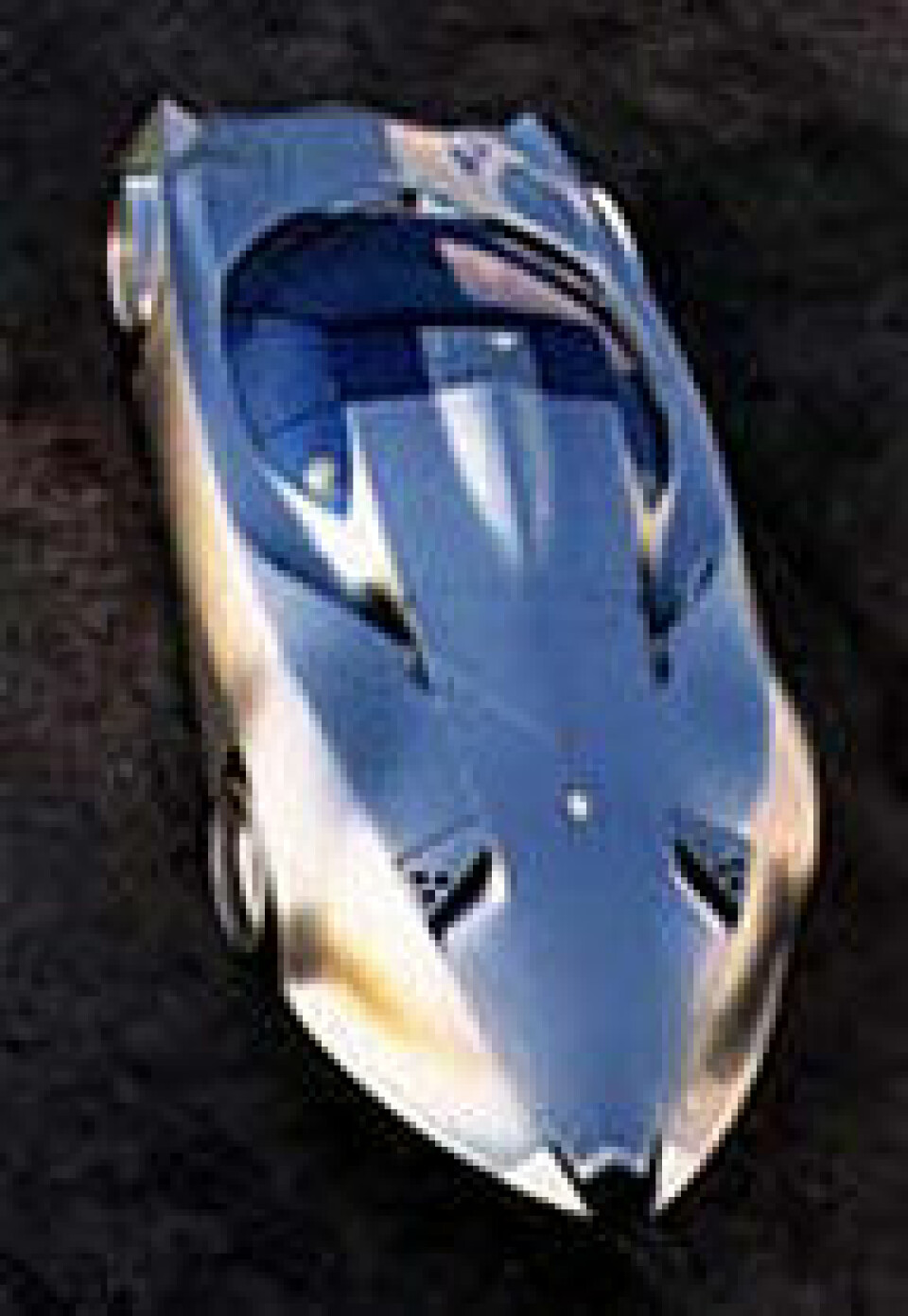
Xeno III - The Personal Concept Car
The Xeno III, the culmination of a decade of design and engineering development, was unveiled at Art Center College of Design on January 26.
The Xeno III, the culmination of a decade of design and engineering development, was unveiled at Art Center College of Design on January 26. Designed by Nick Pugh, a graduate of Art Center, the Xeno III represents a new class of vehicles which Pugh describes as ‘the personal concept car’, a one-of-a-kind machine designed and built around the ergonomics and taste of its owner.
The unique form and specialized construction of the personal concept car stands in sharp contrast to those of the mass-produced cars of today. It represents a future time when new manufacturing and distribution technologies will allow the average person to have a uniquely designed car of his or her own.
The fundamental concept behind the design of the Xeno III is that a car is a robotic skin that you wear, and just as your body features and fashion identify you as an individual so should your car design. According to Pugh, “the nature of assembly line production and mass marketing has created an automotive landscape populated with homogenous design clones.” The shocking style and forms of the Xeno III identify it as something as unique as the character of its individual owner.
The most obvious features of the Xeno III are its sharp-faceted forms and jagged shapes. Contrary to first impression, it is not a stealth inspired design. Pugh explains, “the surfaces of Xeno III present the possibility of mathematically pure forms that combine simple geometry with ‘subset fractal proportioning’. Its aesthetic represents the most logical probability of what the first generation of carbon diamondoid materials may look like.”
This new diamondoid material would have 60 times the strength of steel at a fraction of the weight, could be transparent and could also have animated surface qualities. The body styling of Xeno III blends transparent areas with opaque regions and exotic textures to illustrate this potential.
The Xeno III combines two seemingly contradictory ideas in its fuel system/power plant setup – incorporating clean alternative fuel and high performance.
Conceptually this combination represents an important futuristic idea. Today’s vehicle is fueled up, it uses this fuel to drive it, and gives out some sort of emission as a by-product. This can be called an “open loop system” . Pugh proposes a closed-loop system, where the emissions will be captured and recombined into usable fuel through solar power on board or while the vehicle is parked – producing no by-product other than heat.
The Xeno III is not a closed loop system, but with its high performance and low emissions, it represents the possibility of closed loop technology, where high power and cleanliness could exist simultaneously.
The engineering and style of the Xeno III are balanced equally - the chassis and body are woven together in a complex anatomy with no dominant component.
As a ‘robotic extension of the body’, the Xeno III contains and surrounds its driver in a unique way. The shock absorbers are armrests, the suspension wraps around the legs, the windscreen is a ‘headdress’. The car offers a combination of aerospace construction methods and jewelry-like detailing. The headlights and taillights, for example, are an intricate assembly of machined aluminum parts holding the halogen and LED arrays much like a diamond is held by a clutch in a ring.
The Xeno III is indeed a very personal concept car. It is one of a kind, and it is also intended as a piece of functional art, built with the best of today’s materials, and made to last generations if properly maintained.
An ultra low emissions vehicle, Xeno III is powered by natural gas. The technology and infrastructure available today make natural gas an attractive choice of fuel. In addition, the performance of a natural gas vehicle is comparable to that of a gasoline powered vehicle.
Natural gas is also a bridge fuel to hydrogen. The research and development behind the Xeno III’s natural gas system will make a relatively easy upgrade to hydrogen possible in the future. Natural gas also allows for home refueling, and Xeno III will be equipped with a stationary home fueling unit.
Nick Pugh studied Transportation Design in Pasadena, at Art Center College of Design. In 1989, during an internship at Renault’s design department in Paris, Pugh discovered deconstructivist architecture. Forms and compositions by Lebbeus Woods and other avant-garde architects influenced Pugh’s developing style. He was already influenced by fractal mathematics - both his father and his stepmother are mathematicians.

While studying at Art Center, Pugh’s angular and edgy style influenced other students and the industry alike - he is credited as one of the creators of the ‘new edge design’ aesthetic.
He is the founder of NGV-USA, and created a patented fuel storage chassis that increases the range of natural gas powered vehicles. His work in the entertainment field includes projects for Warner Brothers, Universal TV, and Hearst Entertainment.
He currently works for Rhythm and Hues Studios on projects ranging from TV commercials and feature films to motion rides. Pugh’s work has been featured in Wired and Metropolis magazines, and he was a featured guest on the recent TV show “Weird Wheels.” He is a central figure in the new book ‘Build the Perfect Beast’ by Mark Christensen, which chronicles the building of the Xeno III.
Nick Pugh website: www.nickpugh.com
Xeno III photography by Stephen Heller







Personal Manufacturing concept

Xeno III unveiling at Art Center College of Design


Nick Pugh in car with fabricators Bryan Fuller and Steve Kilgore








